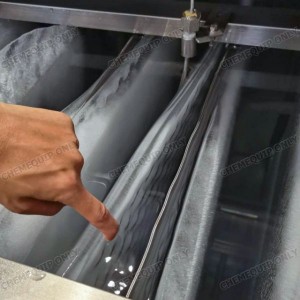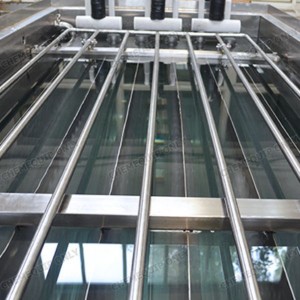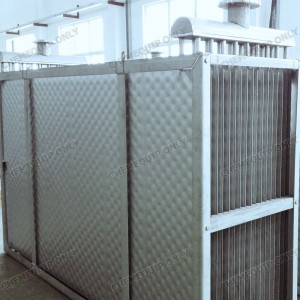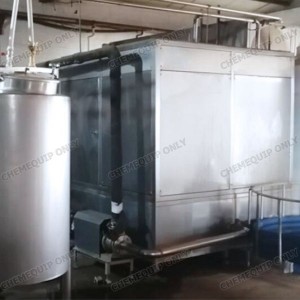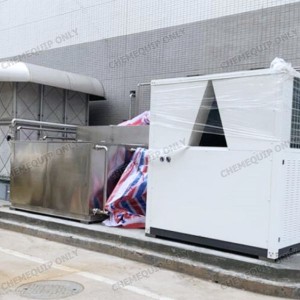Ice Bank for Ice Water Storage
The Ice Bank is a technology based on storing cooling capacity at night and using it the following day to cool. At night, when electricity is generated at a lower cost, ice bank cool fluid and store it normally as chilled water or ice. During the daytime when electricity is more expensive the chiller is turned off and the stored capacity is used to meet the cooling load requirements. Lower temperatures at night allow refrigeration equipment to operate more efficiently than during the day, reducing energy consumption. Less capacity is required, which means lower initial capital equipment cost. Using off-peak electricity to store cooling energy reduces peak daytime power consumption, forestalling the need for additional expensive power plants.
Ice bank is a package of pillow plates upright in the water tank, the cooling media goes through inside of the plates, absorbed heat of water from outside of pillow plate evaporator, cool the water to freezing point. It forms a layer on the pillow plates, the ice film’s thickness depend on storage time. The Ice Bank is an innovative technology that utilizes frozen water and specifical design to efficiently store and manage thermal energy over extended periods, so it can be used whenever needed. With this method, large amounts of energy can be stored inexpensively, making it perfect for projects with high energy demands during the day and low energy tariffs.
Platecoil pillow plate is a special heat exchanger with a flat plate structure, formed by laser welding technology and inflated, with highly turbulent internal fluid flow, resulting in high heat transfer efficiency and uniform temperature distribution. lt can be designed and manufactured in different shapes and sizes according to customer's requirements. The exterior of the Platecoil pillow plate is tank which designed with inlet, outlet and so on.
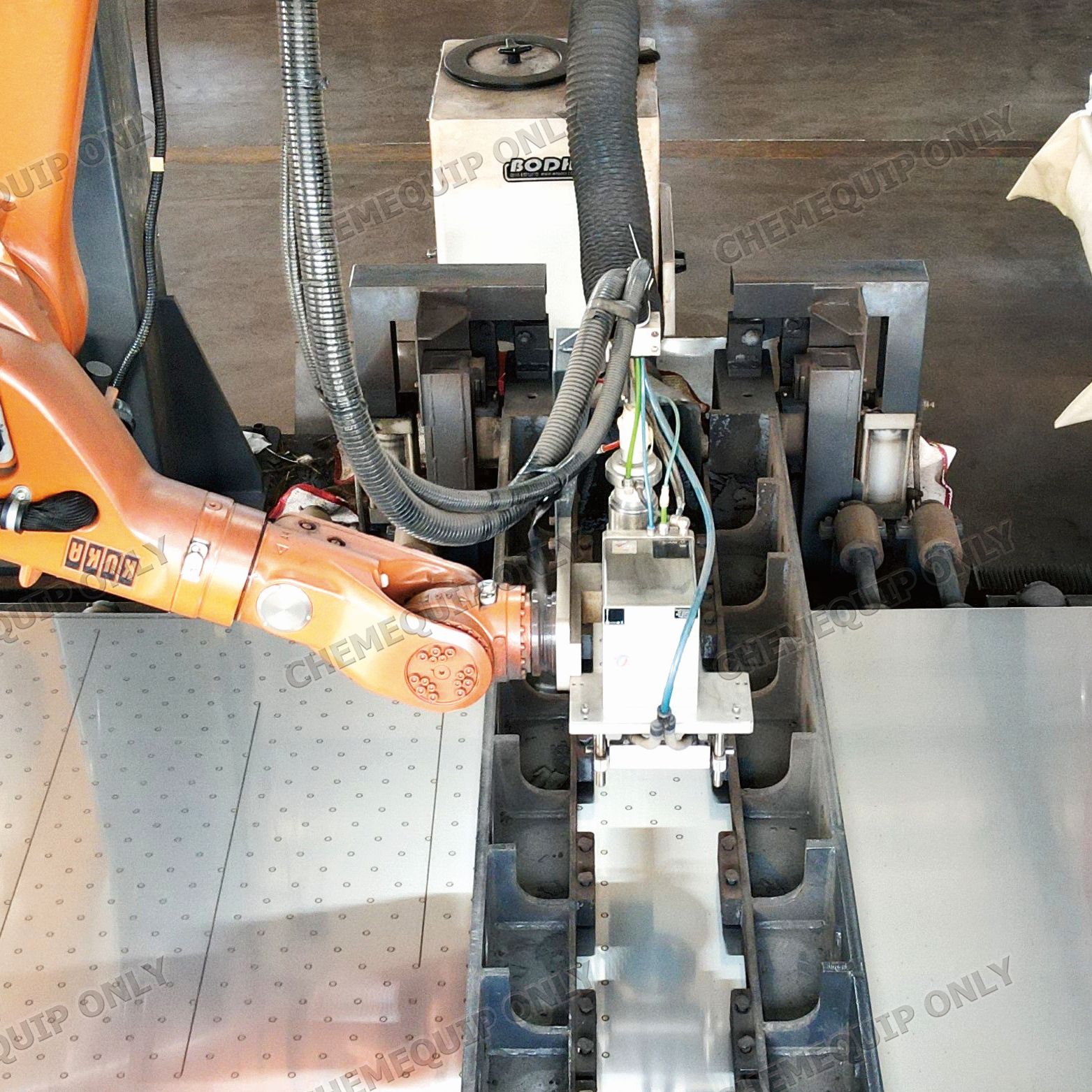
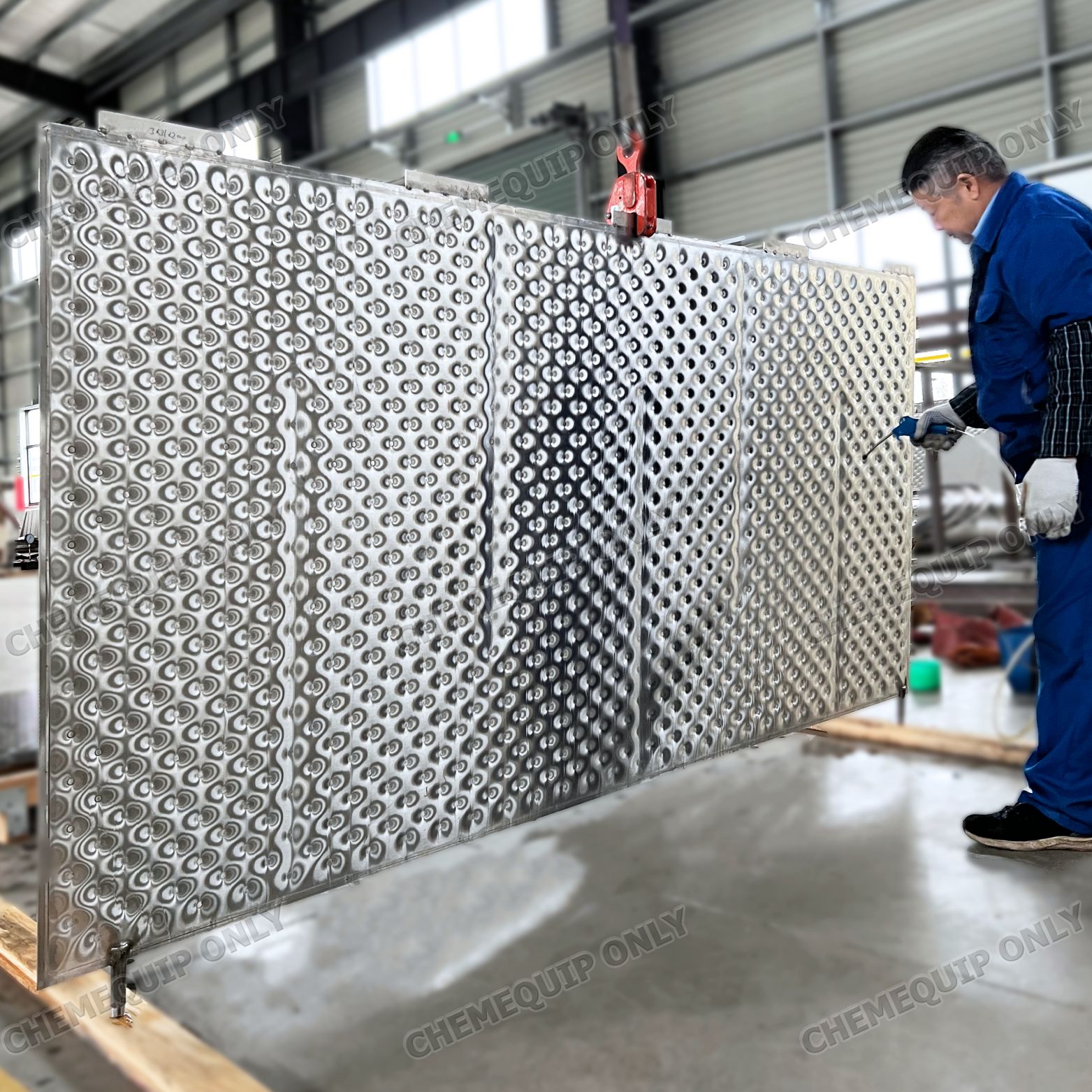
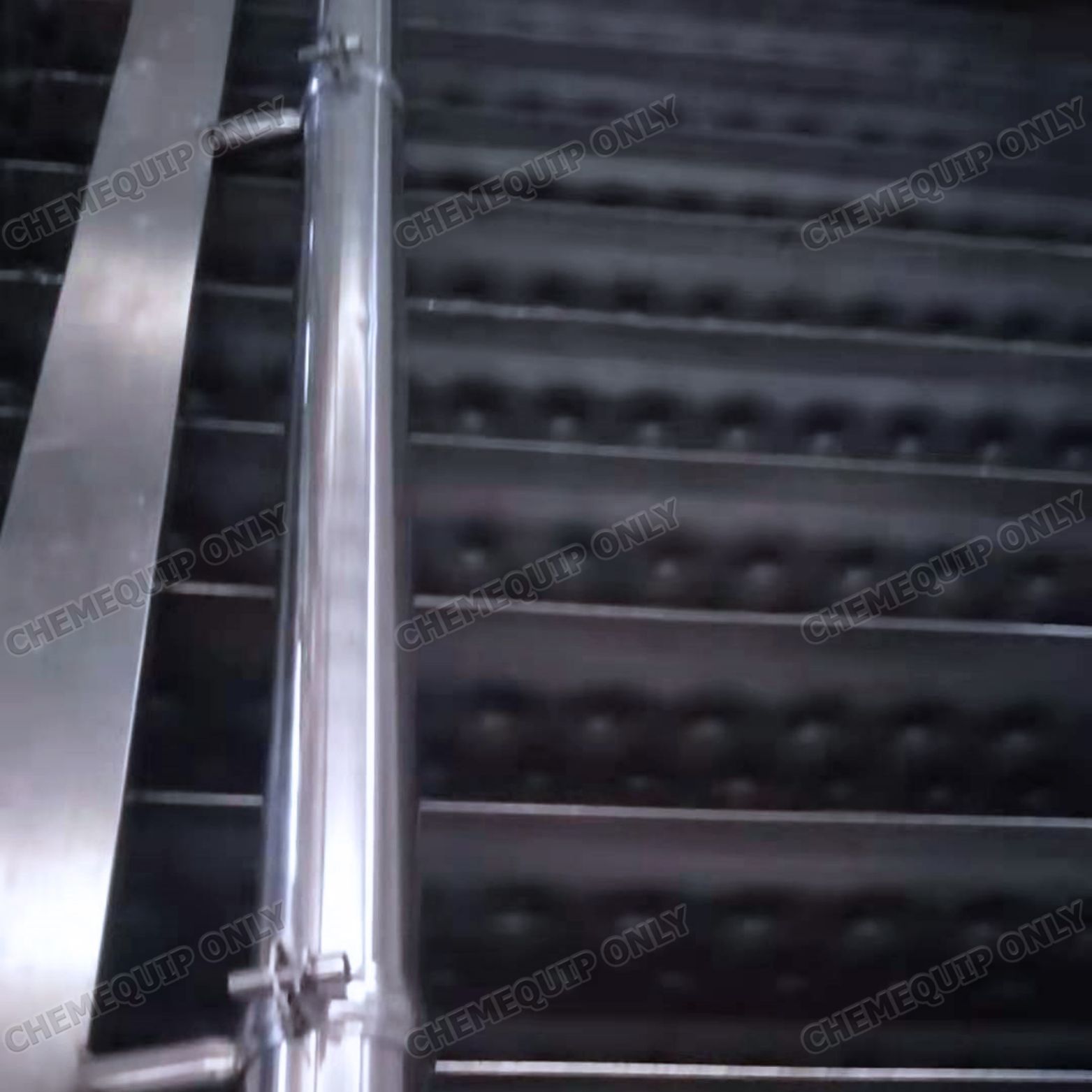
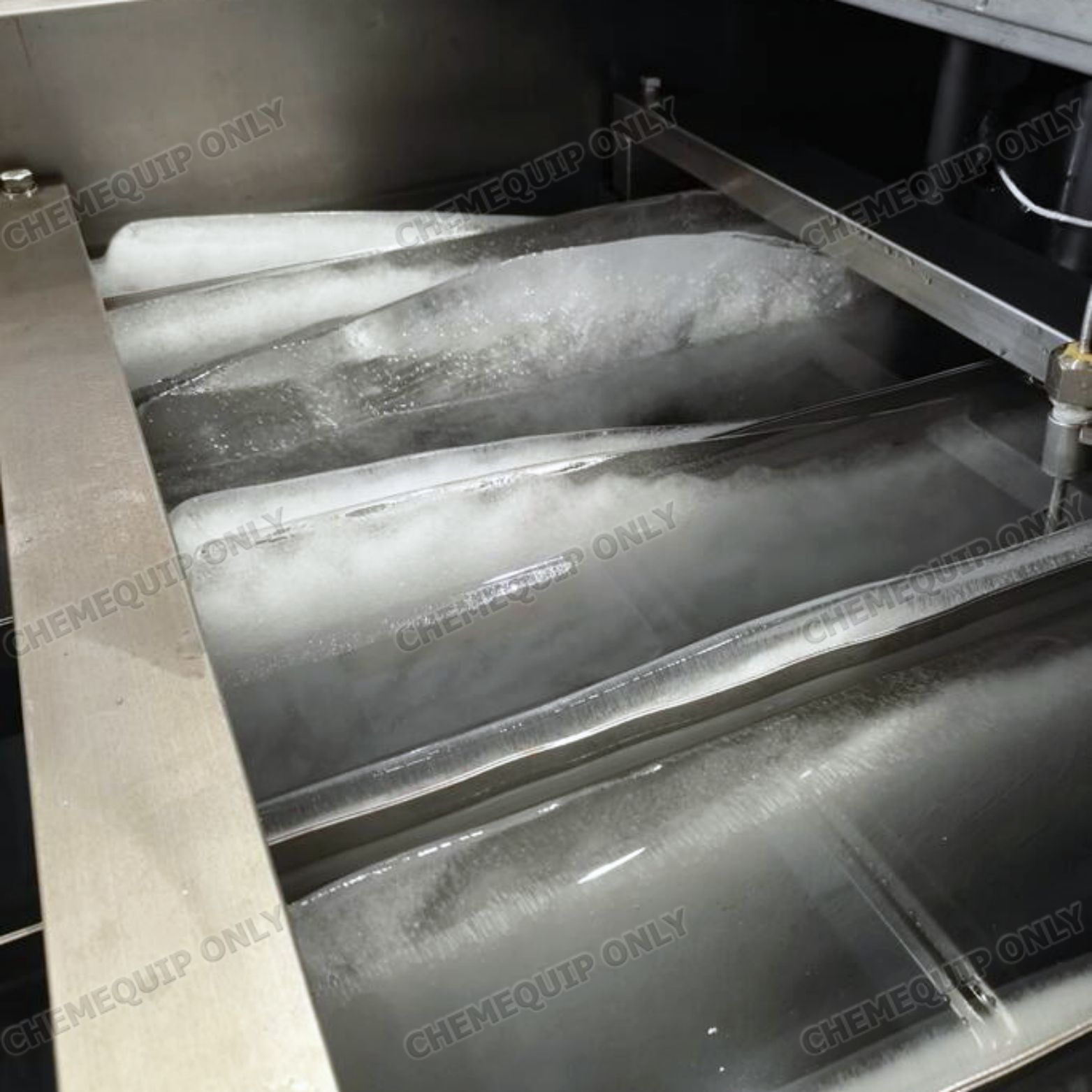
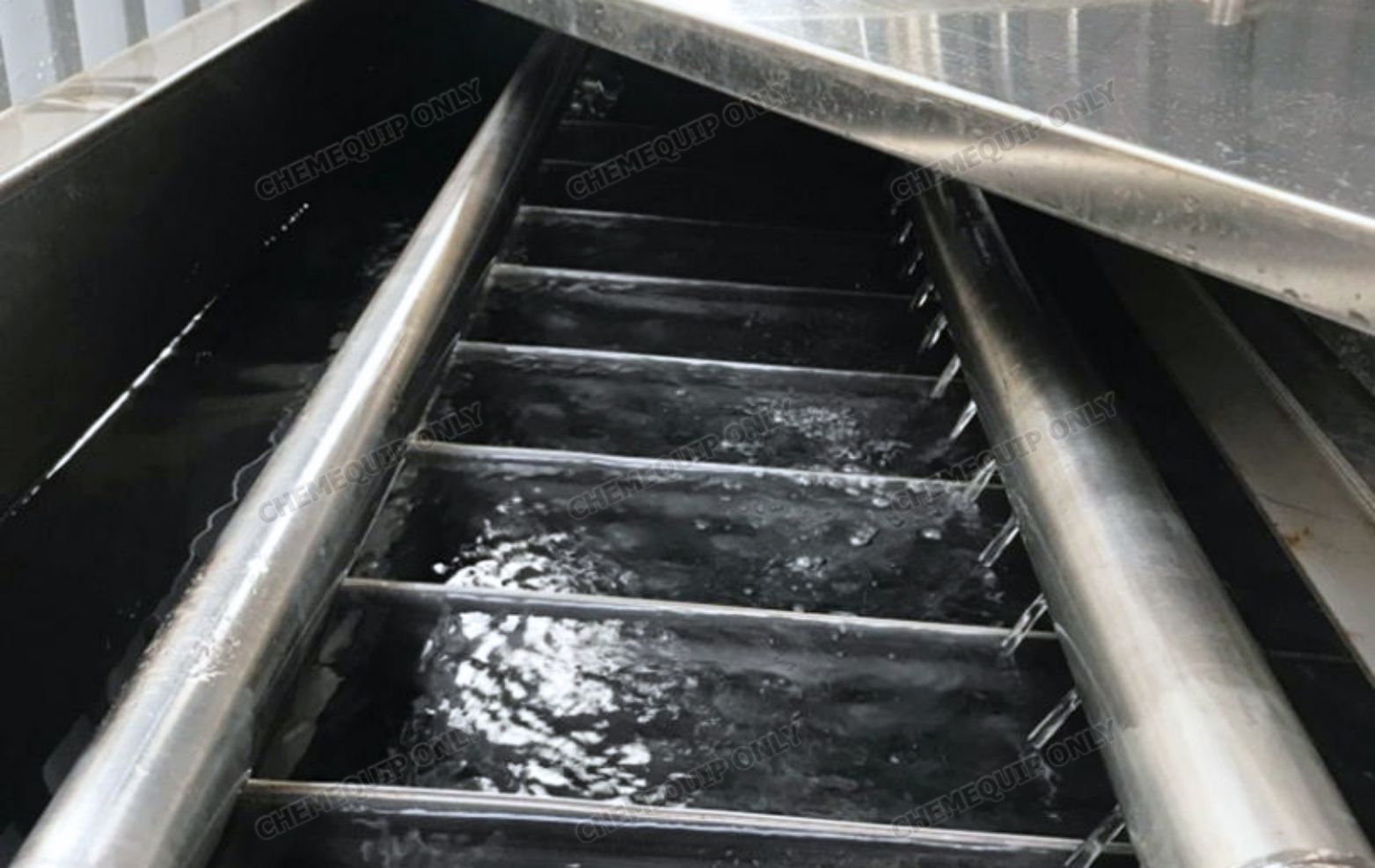
1. In the milk industries.
2. In the poultry industries where the required chilled water is not constant but fluctuates depending on every day’s requirements.
3. At the plastic industries for cooling the moulds and products during the process of manufacture.
4. At the confectionary raw material Industries where a great number of different goods are produced and require different refrigerating consumption at different time periods with different refrigerating loads.
5. In Air Conditioning for large buildings where the refrigeration requirements are temporally certain or fluctuate asynchronously e.g.: offices, factories, hospitals, hotels, gyms etc.
1. Low electric consumption due to its operation during the low-cost night-time electricity tariffs.
2. Consistently low ice water temperature until the end of the defrost period.
3. Ice storage completely made of stainless steel mandatory for applications.
4. Lowest refrigerant content in the refrigeration system.
5. Ice bank as open, easily accessible evaporator system.
6. Ice bank is easy to inspect and clean mandatory for applications.
7. Generate ice water which uses low-cost night-time electricity tariffs.
8. Compact design that can be used for various applications.
9. Large heat transfer area compared to the footprint required.
10. Saving Energy.



